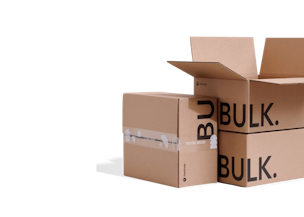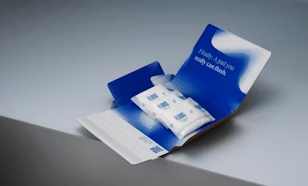Eco Properties
No more confusing words or eco buzzwords. Read about our Eco Properties - the collection of characteristics of our sustainable packaging solutions.
Learn More



Manufacturing
Materials
Biodegradable material
When exposed to light, air, moisture and microbes, this product breaks down to natural elements found in nature. Learn more
Industrially compostable
Products with this label will break down into compost in industrial composting plants. Learn more
Recyclability
Plastic-free
Contains no petroleum-based plastics. Learn more
Recyclable
Can be broken down and used as a new material. Learn more
Recycled content
Contains at least 60% of recycled materials. Learn more
Reusable
Made in a way that allows the product to be used again after fulfilling its original purpose. Learn more

Find your eco-friendly packaging solution.
FAQ
What are eco properties?
Eco properties are a collection of easy-to-understand characteristics related to sustainability in packaging. We know that sustainability is a very complex topic, and so we tried to simplify the classification process by introducing a limited set of eco properties.
Each eco property has a dedicated page where you can dive deeper into their definitions and applications, as well as a range of packaging products that meet their requirements. We’ve also included all the advantages and disadvantages of using packaging with certain eco properties, so you can make an informed decision suitable to your business needs. There’s no one-size-fits-all approach, especially when it comes to custom packaging. Each product is unique with different materials, production methods and the like. It’s a very important fact and something that we want to be transparent about it.
Every eco property has its own icon displayed on the relevant product pages. You can also find them in our Online Packaging Creator and have them printed on your own packaging. We encourage you to use them to pass on the knowledge to your customers. There’s also an option to add a QR code with the label “Unpack my eco properties”, which directs your customer to a webpage featuring the eco properties associated with your packaging.
What is the most important property of sustainable packaging?
There is no simple answer to this question and we believe that every brand should decide what’s most important to them. Is it to avoid plastic or to save trees? Maybe the circular economy or lowering our CO2 footprint is the most pressing concern for you? Every packaging product has its own unique considerations.
Our mission at Packhelp is to empower brands to make better packaging decisions. We have already introduced eco properties that allow you to choose the packaging best matching your sustainability strategy. We are currently working on providing detailed information about the environmental impact of different types of packaging to help you make even more informed decisions.
Why did Packhelp’s list of eco properties change?
We decided to simplify our eco properties collection and focus on the most powerful levers in sustainable packaging. In doing so, we want to improve the quality, transparency and accuracy of how we communicate them to you.
Are eco properties the same as certificates?
No, they are not. Certification is provided by independent third parties (e.g., the Forest Stewardship Council) that can guarantee a given characteristic through internal audits. We are currently working on providing you access to the most powerful certificates in packaging, which will be available to you upon request. You will be able to use them alongside our eco properties or instead of them.
Why is an FSC® Certified Material not the same as a packaging product with FSC® certification?
In order to obtain certification for the whole packaging product, every part of the production chain must have a certificate. Our products labelled with the eco property “FSC® Certified Material” are made of cardboard or paper that has been certified by the Forest Stewardship Council (FSC®), but then we cut it and print on it. In other words, only the material that we receive is certified. If you want to certify your whole packaging, you have to request it during your order so that we can organise production accordingly. We highly recommend upgrading your packaging by adding an official FSC® certificate (with a publicly registered number), because this will allow you to add the widely recognized FSC® icon to your design. In this way, you can provide your customers with the ironclad assurance that the packaging is made with the use of wood that came from responsibly managed forests and mills.
Please bear in mind, now we can only offer the possibility to upgrade your product with FSC® certification for orders that require a quote request.













